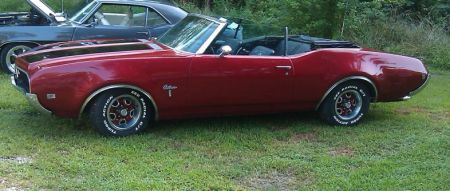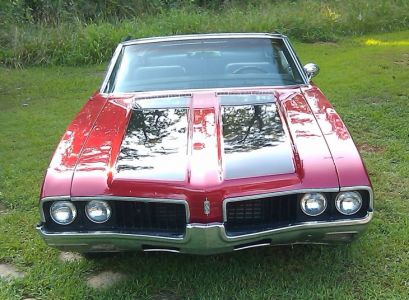Hi frank6696. Welcome to the forum. Elaborate on "no stopping power". If you mean the brake pedal can be pushed all the way to the floor when you're sitting in the garage, that is typical but only on GM products. That would equate to the wheels locked up when driving on the road. In other words, the pedal characteristics on a GM car can be misleading if you don't just go out and drive it.
If the pedal goes to the floor with little or no resistance, there is air in the lines yet or the clearance between the shoes and drums is too large. One trick is to watch for air bubbles in the master cylinder reservoir while a helper pushes the pistons back into the wheel cylinders. Doing so will force brake fluid back up there along with some of the trapped air. Seeing any bubbles is proof air is still the problem.
Another trick to check for excessive shoe clearance is to place c-clamps over the wheel cylinders so the pistons can't move out. If the pedal becomes firm, remove one clamp at a time and assemble that brake. When you find one that causes the low pedal, look for the star-wheel adjuster set properly and in its correct location.
If the pedal is firm but the brakes don't stop the car well, check for wheel cylinders that are too small in diameter, particularly the front ones. Glazed linings will do that too but since you machined the drums, the rough surface would have cleaned off any glazing on the linings.
If the diameter of the wheel cylinders or the bore in the master cylinder has been changed, it will affect pedal travel.
As a last resort, you can disconnect steel lines from the combination valve and install plugs temporarily to see if the pedal becomes firm. That will help identify which hydraulic circuit has the problem.
If the only problem is the brake pull, watch each wheel cylinder while a helper slowly presses the pedal no more than about half way to the floor. If the pistons don't move in one cylinder or the pistons don't move back under return spring pressure, suspect a constricted rubber hose to that wheel. This is more common on hoses that have an anchor bracket crimped around the center. Rust builds up and pinches off the hose. That will result in only one brake applying under light to normal pedal pressure.
Keep in mind that since the drums were machined, they will be different diameters and until the shoes have worn in, the area of lining contact with the drums will be different from side-to-side. That is a common source of brake pull during the break-in period, particularly if there wasn't a problem before the work was done. If there was a brake pull previously, inspect the upper and lower ball joints and upper and lower control arm bushings for free play or excessive movement that allows the spindle to change position relative to the steering linkage. A clue to the source of a brake pull is to observe if the steering wheel shifts position during braking. If it does, suspect a brake problem. If the steering wheel stays straight but the cars pulls to one side when braking, suspect worn steering or suspension components.
Caradiodoc
SPONSORED LINKS
Wednesday, September 22nd, 2010 AT 10:08 PM


